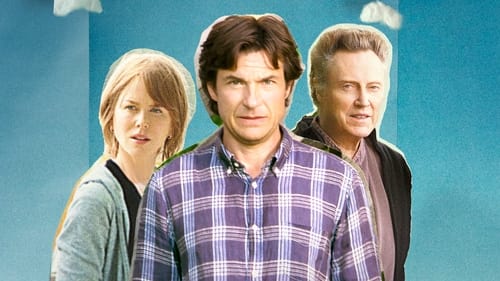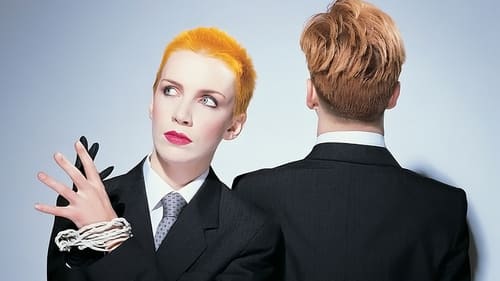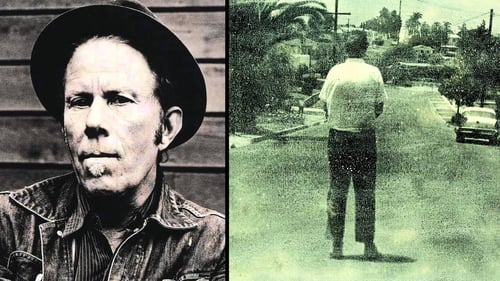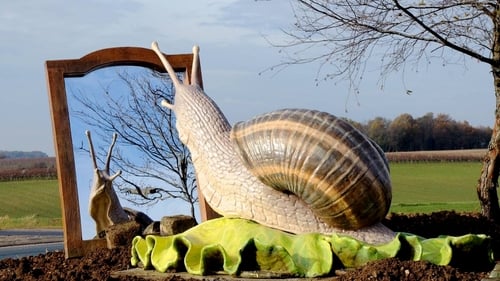Perfect Lives (1984)
Жанр : телевизионный фильм, музыка
Время выполнения : 2Ч 55М
Директор : John Sanborn
Краткое содержание
An opera for television by Robert Ashley. Set in the American Midwest, it is “about” bank robbery, cocktail lounges, geriatric love, adolescent elopement, the changing of the light at sundown, et al. One of the definitive text-sound compositions of the late 20th century, it has been called "the most influential music/theater/literary work of the 1980s".

A brother and sister return to their family home in search of their world famous parents who have disappeared.

A parade of popular consumer items cut to "The Battle Hymn of the Republic". A great example of Pop Art in film.

Bas Jan Ader hangs from the branch of a tall tree, until he loses his grip and falls into a river below.

A short surreal animation created with fashion magazine clippings and sound collages.

An opera for television by Robert Ashley. Set in the American Midwest, it is “about” bank robbery, cocktail lounges, geriatric love, adolescent elopement, the changing of the light at sundown, et al. One of the definitive text-sound compositions of the late 20th century, it has been called "the most influential music/theater/literary work of the 1980s".

London, 1983. The iconic synth-pop band Eurythmics performs at the legendary gay club Heaven.

A musical starring 3 Japanese pop music and TV stars.

The epic life of a world-class artist, jammed into six minutes.

In Europe, road junctions have become public art galleries. A road trip across France, Switzerland, the Canary Islands, Greece and Germany exploring the glorious world of roundabout art.

West Coast Pop Art : From the 40's to the 21st Century. Hot Rods, Pin-ups, Movies, Music, Flame Jobs, Posters, TV, Comics, Cowboys, Monsters, Tikis and Cartoons. All these things are influences on the Artists creating the work sometimes referred to as Lowbrow. Visceral beautifully realistic artwork tapping into the vein of media culture that surrounds us daily. Edgy, energetic and entertaining, this dynamic West Coast movement is changing the way we appreciate art and making it accessible and enjoyable to everyone.

This short film is part of a mixed media artwork of the same name, which also included postcards of Ader crying, sent to friends of his, with the title of the work as a caption. The film was initially ten minutes long, and included Ader rubbing his eyes to produce the tears, but was cut down to three and a half minutes. This shorter version captures Ader at his most anguished. His face is framed closely. There is no introduction or conclusion, no reason given and no relief from the anguish that is presented.

One of a series of ‘falls’ by Bas Jan Ader that he recorded on film, this work was filmed in West Kapelle, Holland in 1970.

Shot in his garage-studio, the camera records Ader painstakingly hoisting a large brick over his shoulder. His figure is harshly lit by two tangles of light bulbs. He drops the brick, crushing one strand of lights. He again lifts the brick, allowing tension to accrue. The climax inevitable—the brick falls and crushes the second set of lights. Here the film abruptly ends, all illumination extinguished.

Animation by Tadanori Yokoo.

Los Angeles-based artist Ed Ruscha’s 1975 short film Miracle centers on a day in the life of an auto mechanic (played by artist Jim Ganzer), who has a transformative experience while working on the engine of a Ford Mustang. Actress and singer Michelle Phillips of the Mamas and the Papas plays his love interest. Since the 1960s, Ruscha has received extensive critical acclaim for his paintings, photographs, drawings, and books exploring the commercial vernacular of Los Angeles—its graphic signage, architecture, and even parking lots. In effect, his work subtly comments on America’s cultural and socioeconomic evolution in the twentieth and twenty-first centuries. Miracle is one of only two films made by the artist in the 1970s. – Contemporary Art Museum St. Louis by Kelly Shindler, Associate Curator

A Pop Art extravaganza by Fred Mogubgub from the late-1960s, innovative in the use of the quick cut, this film is a parade of pop icons of its time. Features a pre-Playboy, pre-N. O. W. Gloria Steinem.

A concept film from Imogen Heap and Thomas Ermacora, made with crowd-sourced video footage, creating a nature film accompanied by an Orchestral score composed by Heap.

Conceptual-structural film by Branko Karabatić exploring media and television.


Druga linija aka The Other Line is a product of many years of research of neo-avant-garde cultural and art scene in Novi Sad, Serbia (late 60s and 70s), which has been marginalized until today. This artistic movement was directly connected not only with important art centers of the former Yugoslavia, but also with existing flows of world art during its brief and productive activities (7e Biennale de Paris, 19th Berlinale). The cultural and artistic emancipation of that time had implied individual freedom of expression and strong reaction to established boundaries. This avant-garde movement had become threat to communist establishment, the authors' work were sabotaged, the films were sealed off, five artists were taken to trial, two were sent in prison. How is it that the retrograde mechanism of shutting down and removing the most creative and representative progressive impulses of our surrounding is still so current to this day?







